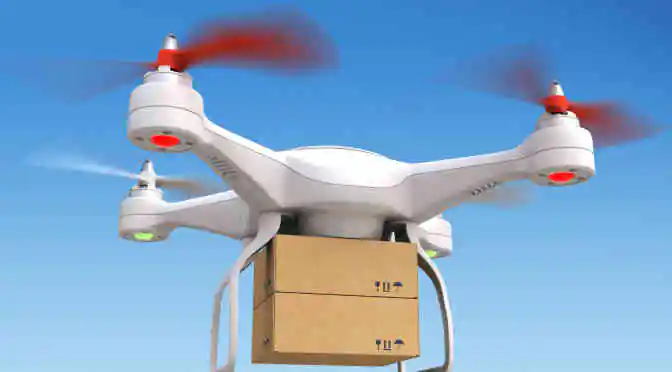Drones really took off at this year’s Consumer Electronics Show (CES), with over 40 different exhibitors showcasing everything from selfie drones to underwater drones to drones shaped like ships from Star Wars. As these miniature aircrafts become more popular and their technology becomes more sophisticated, drone manufacturers are targeting the consumer market with diverse and innovative offerings.
The future is looking strong for the global consumer drones market. Predicted to reach a value of USD 1.56 billion in 2017, the market’s growth will accelerate over the next five years, bringing it to a total of USD 2.93 billion by 2021. Given the 32,500 square feet taken up by drones at CES 2017, this perhaps does not come as a big surprise.
Out-of-body experiences: The power of VR
Another popular trend, both at CES and elsewhere, is virtual reality (VR). Like drones, it has both practical and recreational applications, and some manufacturers are deciding to combine these two technologies. Ever wanted to know what it would be like to fly? Drones and VR can now bring that experience closer than ever.
Vendors like DJI are now producing virtual reality goggles to pair with their drones. Instead of watching the drone’s camera on a phone or tablet screen, users can now get that bird’s eye view in first person. Whether it’s for a casual flight to admire the scenery and practice aerial photography, or competing in a drone race (there’s even a league for that), piloting a drone can now be much more immersive.
But real-time flight isn’t the only use for this collaboration between VR and drones. Since these small unmanned aerial vehicles (UAVs) can access places that are unsafe or difficult for people to reach, they provide exciting new opportunities both for tourism and for research. For example, archaeologists are currently using this technology to examine an ancient burial site in Laos at the Plain of Jars.
Archaeology from the air
Researchers have used aerial video combined with excavation records and other data to recreate Site 1 on the Plain of Jars, where excavations were begun in February 2016. The team has created a 360-degree virtual reality room at Monash University in Melbourne, Australia named Cave2. From here, they can reexamine the site at their leisure, and others who cannot make the trip to the site in Laos can still study it for themselves.
Cave2 will also be used for other sites on the Plain of Jars, where undetonated American bombs from the Vietnam War make digging far too dangerous. So far, only 7 out of 85 discovered jar sites have been excavated, but drones can collect data from the others, which researchers can then compare to the sites they have been able to access. This technology is providing greater access to areas and information that would otherwise be too expensive and dangerous to obtain, helping accelerate discoveries about people from a thousand years in the past.
With both practical and entertaining applications, VR-enabled drones bring many exciting possibilities, allowing people to visit places and have experiences that would otherwise be impossible. Vendors are creating better and more sophisticated cameras and chips to support these endeavors, which will lead to more drone manufacturers offering VR. The consumer drone market is still in the early growth stage, and technology like this will help propel it for the next several years. With the amount of creativity and technology on display at CES 2017, who knows what next year will bring!
To Know More About Consumer Drones




